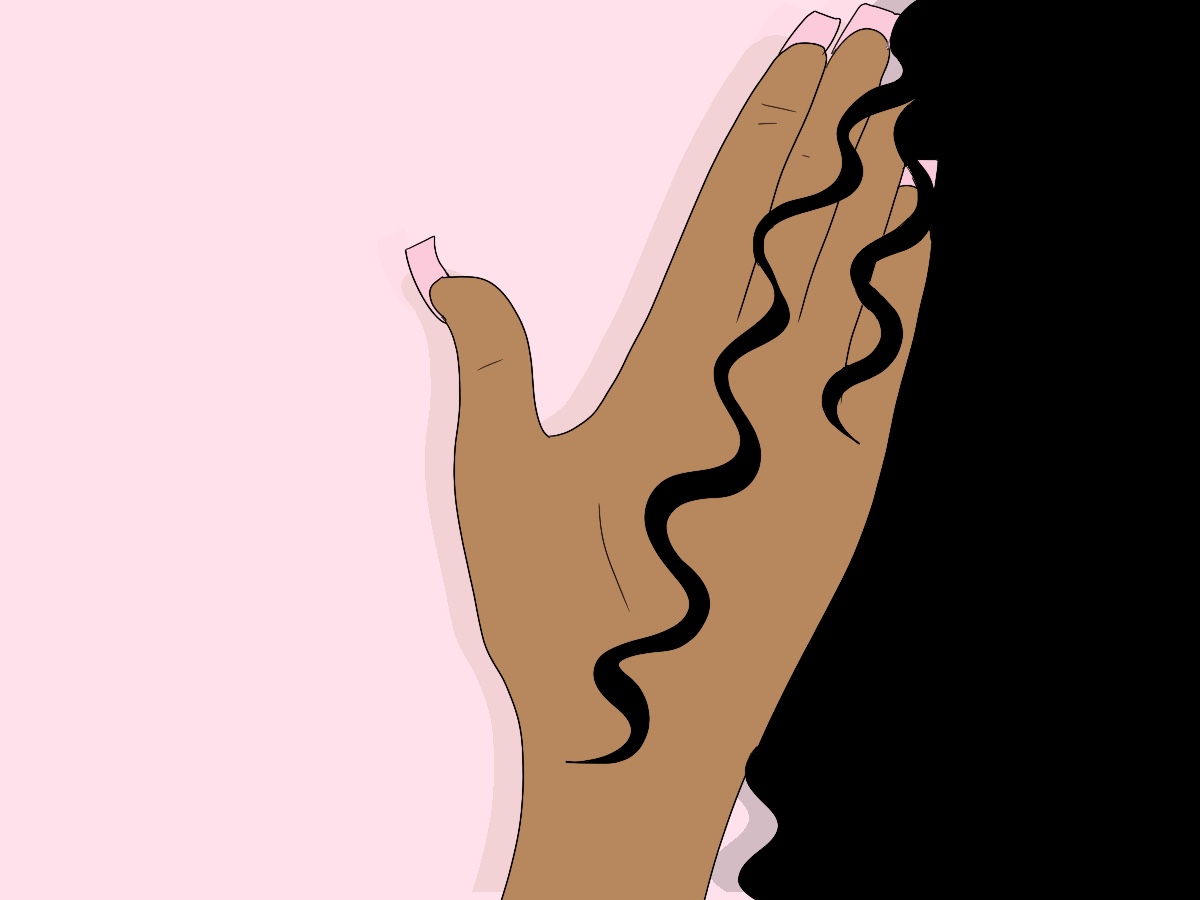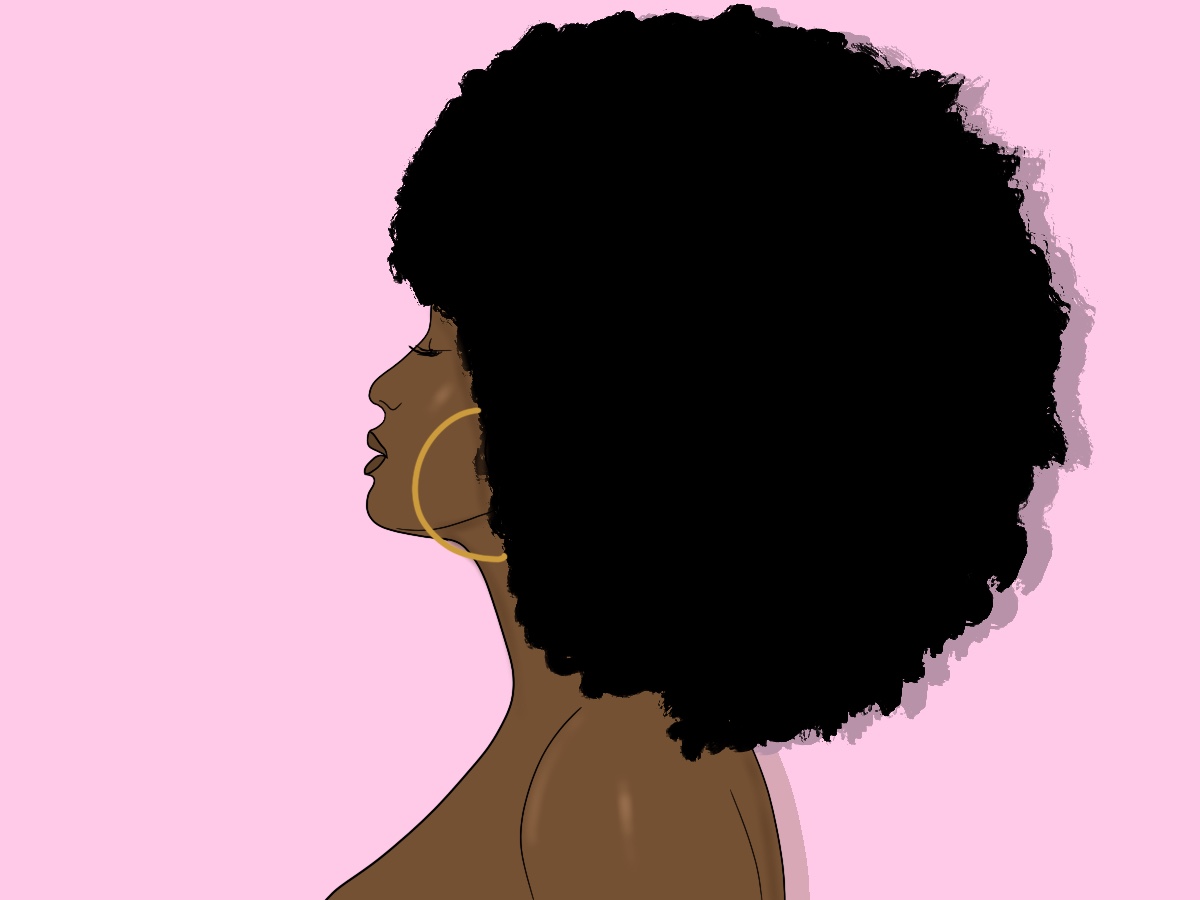It’s nineteen seventy-something and the smell of freedom hangs in the air like oil-sheen hair spray. The success of the civil rights movement meant that the Afro had become a symbol of hope and resilience to a whole generation. In the seventies, you could reject oppression and embrace the power of your people whilst looking like an absolute baddie. Whether you had fair skin or a rich brown complexion; soft curls or dense coils; you felt empowered by simply wearing your hair how it was. No manipulation, no alteration, completely natural. However, since, we have rarely had the pleasure of seeing Black women in the mainstream wearing their natural hair.
The Black girl aesthetic
It’s no secret that textured hair has struggled to be accepted in society. From the 80s to the 2000 sit felt like our TV screens were flooded with silk presses and bone-straight sew-ins. On the rare occasion we’d see Afros, they were almost exclusively shown on actresses with looser and more Eurocentric curls (hair type 3). By the mid-nineties, the Tracee Ellis Ross, Lisa Bonet, Tia & Tamera-inspired curls were solidified as the ‘Black girl aesthetic”. However, this left a very large problem. If mixed-raced actresses with loose curls became the standard for Black hair and beauty, what about those of us with tighter, more Afrocentric curls (hair type 4), who didn’t fit the mould?
This left us feeling not quite pretty enough, with hair not quite ‘good’ enough and ironically feeling far too Black. We looked to our TV screens and hair and beauty ads but instead of seeing ourselves, we saw what we ought to look like. So naturally we adapted. We changed the parts of us that didn’t fit society’s idea of beauty, regardless of how painful the process was.
Most of us are still haunted by an early memory of having a hot comb plunged into our hair to make it ‘manageable’. I recall being hunched over a bathtub while their mum washed out a relaxer that made my scalp feel like the fires of Hades himself had been unleashed upon it. Unfortunately, at a very early age, we learned that beauty was pain. We also learned that we had to endure so much more than everyone else to achieve it.
Those of us with tighter coils (hair type 4) have been met with an abundance of texture shaming. This is because historically, tighter hair textures were considered undesirable as they are farther from the European beauty standard. So generation after generation women straightened, covered or hot-combed away their curls until they inevitably broke off, with no real tools or understanding of how to care for it. We stopped loving our hair. Quite frankly we stopped knowing our hair, until the natural hair movement.
The beginning
Stirrings of the natural hair movement began on social media platforms like Youtube in the late 2000s. This became a haven for women with curly hair to bond, share tips and embrace the hair they had so long been shunned for. As the movement spilt over to other social mediums like Instagram and TikTok, the community grew.
The movement gave self-proclaimed ‘naturals’ healthy alternatives to relaxers and straighteners like mini twists and T.W.As (Teenie Weenie Afros). Since then, we have seen a wave of women donning protective styles like braids and wigs. It also gave birth to arguably one of the largest trends of the lockdown, which of course was ‘the big chop’.
In its origin, the natural hair community was a space etched out for curly girls by curly girls. A place where women could escape from societal beauty standards and quite literally let their hair down. This was particularly significant for those with type 4 hair, a texture which is seldom showcased, let alone celebrated.
Naturals began to experiment with their curls and find what worked for them. Whether you had 3A (loose waves) or 4C (tight coils) hair, there was a tutorial, product recommendation or home remedy to help. But like all waves, this movement created wider ripples on social media and before we knew it we were drowning in overpriced pseudo-remedies and underrepresentation.
Not our business

Originally, newer Black-owned brands like Camille Rose Naturals or Mielle began to thrive. Older brands like Palmers also flourished by introducing curl-friendly product lines. But the faces used to promote the movement itself became increasingly more ‘streamlined’ until the natural hair movement was synonymous with women with waist-length, perfectly curled, manes of hair.
The ideal curly girl
As a result of this, it seemed like every month a new hair elixir would appear guaranteeing the perfect curls in just two weeks! And influencers with loose curls and the genetic predisposition of a Herbal Essences advert were used to promote them. With this, methods of curl stretching became more popular than curl preservation. Protective styles like wigs, became a veil of self-consciousness rather than a means of protection.
This was also reflected in the products being promoted. Many of the Black-owned businesses found it hard to compete with larger corporations, making them vulnerable to being bought out. Said corporations would then change the formulas of beloved products making them fundamentally unusable for many naturals– particularly those with hair type 4.
What once was a collage of differing hair textures became a conveyor belt of expensive products and ‘curly hair gurus’ that seemed to only cater for a certain hair type. We had come full circle and type 4 girls had again felt the familiar sting of never being good enough. Not even in the spaces made for them. But this didn’t go unnoticed.
4C clickbait
Proving that when it rains it truly does pour, the underrepresentation of type 4 hair, led to a deluge of ‘curly influencers’ using the term ‘4C hair’ as clickbait. 4C hair is the tightest curl pattern on the Walker hair chart and is usually the least represented. Because of this, influencers began to mislabel their content, allowing them to tap into a niche that wasn’t theirs to contribute to, in turn, increase their exposure. This was bad for those who did, in fact, have 4C hair. It solidified the idea that their hair wasn’t good enough because their hair didn’t look like their favourite influencer.
Fleeting miracle growth trends replaced the ideals the natural hair movement was founded on like “hair porosity over curl pattern” or the motion that “all healthy hair is ‘good hair.’” This caused the exclusion of anyone who didn’t have tresses that could rival Rapunzel. The issues of texturism and colourism have been a battle people of colour have fought for generations. It relates to the wider issue of Eurocentricity. But how can we fight against it if we can’t even sort it out in our communities?
Representation is key
Hairstyles have been used to represent tribe, age, and even royal status in the past. In modern Black history, they have been used as a weapon of defiance and a symbol of pride. Now we see our hair as a means of self-expression.
Doja Cat and Hallee Bailey (both women with hair type 4) have recently made headlines for their hairstyles. Earlier this year Hallee Bailey starred in the eagerly awaited live-action remake of The Little Mermaid, where she sported her waist-length amber dreadlocks. Doja opted for a sleek big chop by shaving her hair completely.
These celebrities among many others like Issa Rae, Yara Shahidi and Viola Davis, remind us that there is not one way to wear your hair and there is not one texture that is ‘correct’. They remind us that your hair is an extension of your identity but not the be-all and end-all of black beauty. With this, the days when we can all see our hair as a sign of culture and community are not long gone and also not too far away.
Find more beauty articles here >
Written by Marisa Mullings


I could almost smell the beginning of this article! You really transported us to each of the hair eras that you described!
And what a breath of fresh air this article was – I think you highlighted a key issue with the natural hair movement, which started off with the best intentions but became problematic because of texturism and colourism as you mentioned. Thank you for using your voice to make us feel seen, but to also spread a message of hope 🙂